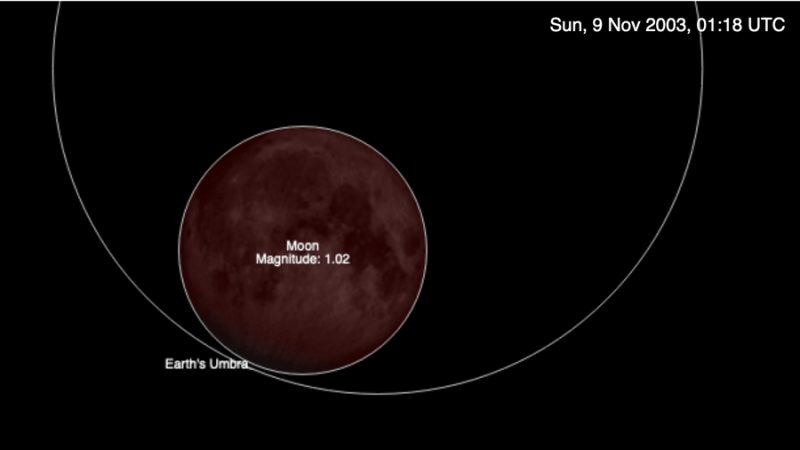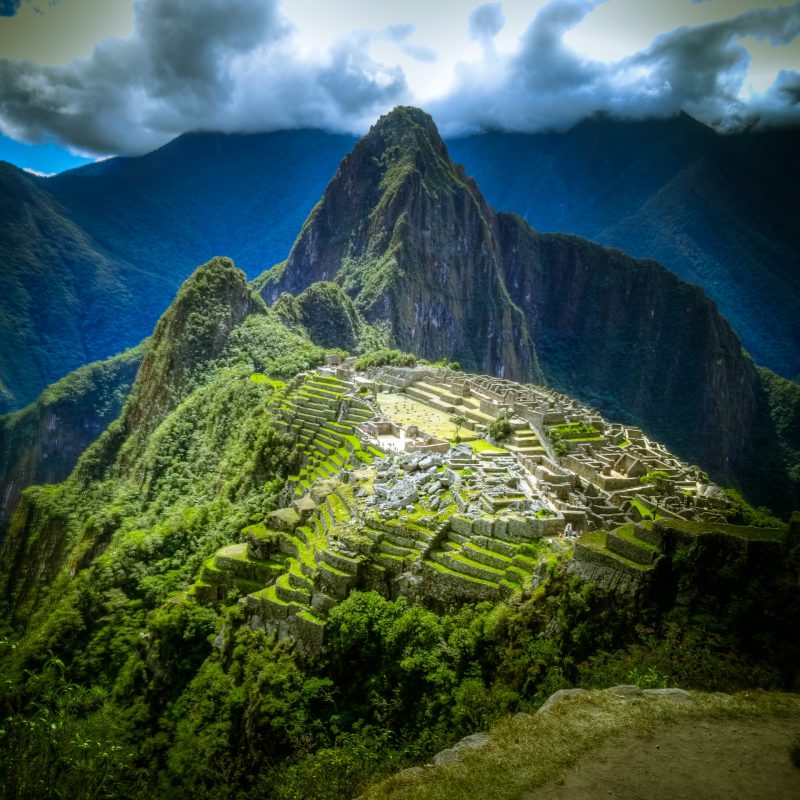Partial lunar eclipse with near-perfect alignment
Timeanddate.com originally printed this article, which is by Graham Jones. Reprinted here with permission. Some edits by EarthSky.
Looking for eclipse times and other info? Try this article by eclipse guru Fred Espenak.
The November 19, 2021, partial lunar eclipse – which is best overnight on November 18 for North America – will be the longest such event within a stretch of 1,000 years. The last partial lunar eclipse that stretched longer happened on February 18, 1440. The next time Earth will see a partial lunar eclipse as lengthy as this month’s will be on February 8, 2669. Why is it so long? As you might have guessed, the ordinary movements of worlds in space play a role.
Between 06:02 and 12:03 UTC (convert UTC to your time) on November 19, the sun, Earth, and moon will come into near-perfect alignment. Earth’s shadow will fall on the moon, resulting in the partial lunar eclipse. At the maximum point of the eclipse – at 09:02 UTC – 97% of the moon’s face will be covered by the dark inner part of Earth’s shadow, called the umbra. The remaining sliver of the lunar disk will be deep within the lighter, outer part of Earth’s shadow, known as the penumbra.
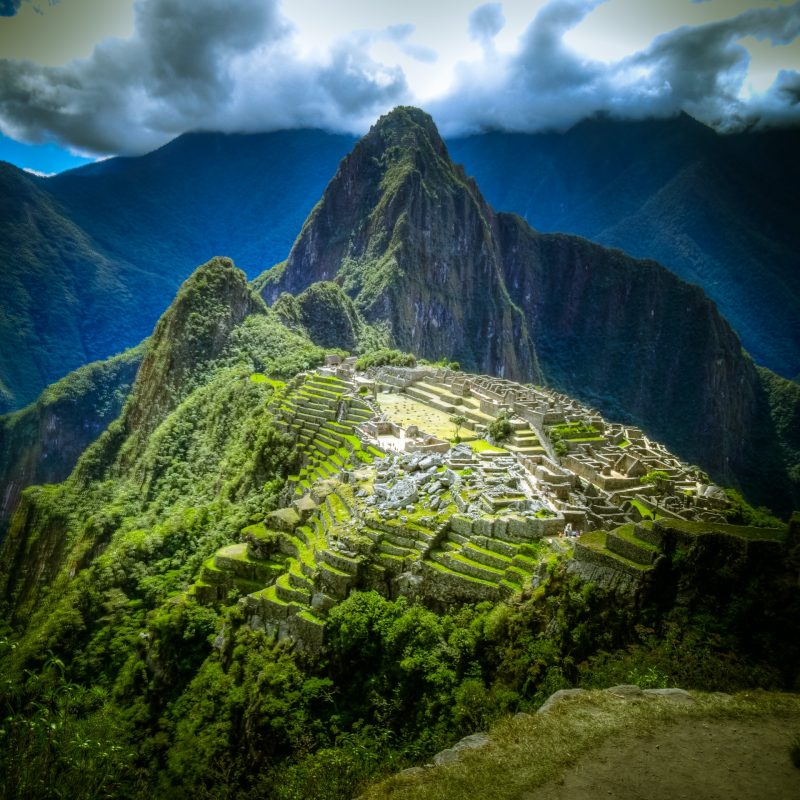
The overall duration of the November 2021 eclipse – from the moment the moon enters Earth’s penumbral shadow, to the moment it leaves – will be around 21,693 seconds (about 6 hours and 2 minutes). For a non-total lunar eclipse – in other words, a lunar eclipse that only has penumbral and partial phases – this is an unusually long duration.
By the way, when we speak of the duration of this eclipse, we’re including the penumbral phases preceding and following the partial umbral eclipse. The umbral phase of the November 18-19, 2021, partial lunar eclipse is 3 hours 28 minutes and 24 seconds long. It is the longest partial umbral eclipse of this century.
Viewing details on the November 18-19 eclipse here.
Like the moon? See its phase for every day in 2022 on EarthSky’s lunar calendar! Beautiful poster makes a great gift. Order now. Going fast!
The November 2021 partial eclipse is longer than many total lunar eclipses. For example, the overall duration of the total eclipse of May 26, 2021, was 18,127 seconds, roughly one hour less.
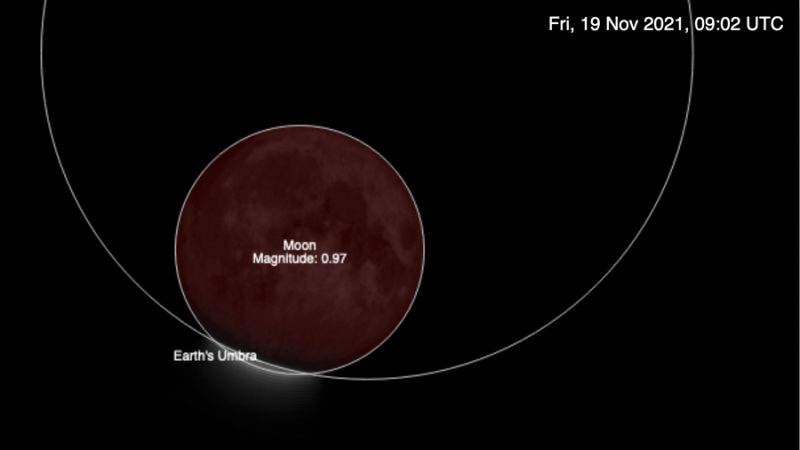
Why is the November 2021 eclipse so long? The maximum point of the eclipse comes about 41 hours before the moon reaches apogee, its farthest point from Earth for this month. The farther away the moon is, the slower it travels along its orbit. A moon at apogee simply takes longer to pass through Earth’s shadow.
By contrast, maximum eclipse in May 2021 occurred around 9 hours after perigee, the moon’s closest point to Earth for that month. Another way of saying this is that the November eclipse involves a micromoon. Meanwhile, the May eclipse featured a supermoon.
In the 1,200 years from 1451 to 2650, there are 973 partial lunar eclipses. The top five eclipses in terms of overall duration are listed below.
Longest partial lunar eclipses from 1451 to 2650
1. November 19, 2021: 21,693 seconds (6 hours 2 minutes)
2. November 30, 2039: 21,609 seconds (6 hours 0 minutes)
3. October 9, 2489: 21,557 seconds (6 hours 0 minutes)
4. December 11, 2057: 21,532 seconds (5 hours 59 minutes)
5. December 22, 2075: 21,464 seconds (5 hours 58 minutes)
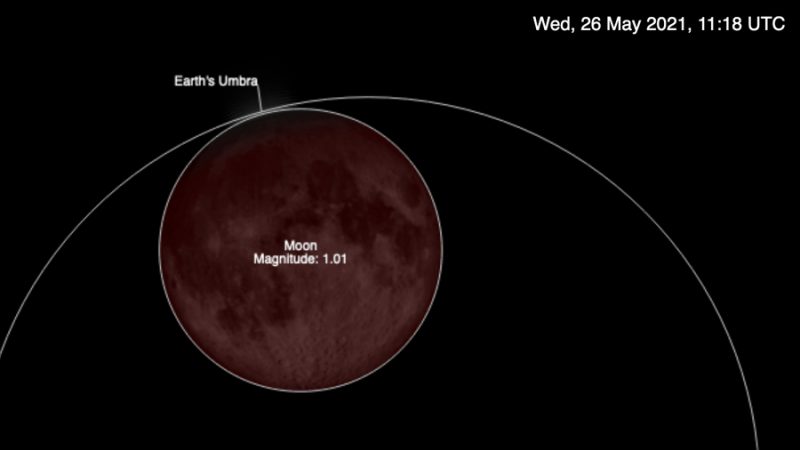
Apart from the 2489 event, the eclipses on this list are all separated by about 18 years and 11 days. This is no coincidence. Eclipses repeat – with very small differences – in a 6,585-day cycle known as the Saros.
If we go back one Saros period before November 19, 2021, we arrive at November 9, 2003. The lunar eclipse that occurred on this date was almost identical, but the total duration was even longer: 21,795 seconds (6 hours 3 minutes). Why does it not show on our list above? Because the sun-Earth-moon alignment was a fraction more perfect than in November 2021; the result was a total lunar eclipse, not a partial one.
Bottom line: The partial lunar eclipse on November 19, 2021, will be the longest since the 15th century, around the time Machu Picchu was being built. The next time Earth will see a partial lunar eclipse that long will be on February 8, 2669. This is, coincidentally, close to the year that the time-travel movie Bill & Ted’s Excellent Adventure begins!
Via timeanddate.com
